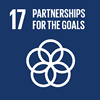
Over the past two decades, social protection has become an integral part of anti-poverty policy strategies in the Global South. The pace by which social protection systems have expanded, as well as the type of programmes that have been adopted, vary substantially across countries and world regions. What explains this variation?
This project offers new insights into the determinants of social protection expansion and assesses how development assistance contributes to these dynamics. The project’s findings offer evidence on how development assistance can be more effective at supporting social protection systems in the Global South, especially in sub-Saharan Africa.
A key output of the project is a report to the Swedish Expert Group for Aid Studies (EBA), supported by two WIDER Working Papers that build on the findings of the report. Key empirical findings in the report are based on the Social Assistance, Politics, and Institutions (SAPI) database.
The project adopts several methods including: (1) a systematic review of the literature on social protection adoption and expansion, giving special attention to the role of development assistance; (2) a comparative analysis of social protection expansion, based on advanced econometric methods; and (3) a statistical analysis of aid policy priorities and strategies in the support of social protection systems.
Key findings
- Aid targeted at supporting social protection has historically captured a very small fraction (about 2 per cent) of total global aid budgets, although in absolute terms they increased by approximately 60 per cent between 1995–99 and 2015–19
- Aid flows to social protection have been outpaced by development assistance to other sectors, such as health and education, leading to a declining share in overall aid budgets to social protection
- Econometric analysis shows that aid does have a positive effect on the expansion of social protection systems among LICs and MICs in the Global South
- In the case of sub-Sahran Africa (SSA), results indicate a positive contribution of aid to the development of social protection systems. Globally, an increase in social protection aid by one percentage point leads to an increase in the share of countries’ population covered by social protection by approximately 0.25%, which is not negligible. The effect is marginally larger in SSA at approximately 0.26%
- We do not find any evidence of a detrimental effect of aid on the development of social protection systems
- The economic dynamism of aid-recipient countries, redistributive fiscal capacity, the prevailing terms of trade, and the level of income inequality are all positively associated with the recent expansion of social protection systems in SSA
- Building in parallel the fiscal capacity of countries is desirable, and possibly the most effective way to secure the long-term sustainability of social protection systems.
- At the global scale, social protection aid exhibits a cyclical pattern, spiking in response to financial crises and price shocks. The bulk of aid distributed in the aftermath of the 2008–09 financial crisis, particularly from multilaterals, was distributed to middle-income countries (MICs) that already had social protection programmes in place. Many low-income countries (LICs) were unable to absorb social protection aid because they did not have nationwide social protection programmes and systems in place. This underscores the importance of developing social protection systems to act as countercyclical instruments in times of crisis.
Effects of aid on social protection in systems in sub-Saharan Africa is supported by the Swedish Expert Group for Aid Studies (EBA), and it continues UNU-WIDER’s long engagement with research on foreign aid and social protection.
Watch this space
All papers, events, briefs, blog posts, and opportunities to engage relating to the project will be available on this webpage.
UN’s 2030 Agenda for Sustainable Development
The research addresses SDG17: Partnerships for Goals, and in particular target 17.1, which focuses on enhancing international support for implementing effective and targeted capacity building in developing countries.
Context
Main subject
Theme: 2019-23, Transforming states
 Join the network
Join the network


